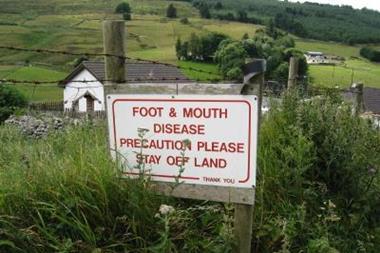Report highlights top ten risks to insurers
Potential climate change is the greatest strategic risk currently facing the property/casualty insurance industry, closely followed by demographic change and catastrophic events, according to a new study by Ernst & Young.
For the new study Ernst & Young and Oxford Analytica interviewed more than 70 industry analysts from around the world to identify the emerging trends and uncertainties driving the performance of the global insurance sector over the next five years. The study identified risks in three broad areas—macro, sector-specific and operational threats. It identified the top ten risks and five emerging threats.
Peter Porrino, global director of insurance services at Ernst & Young, commented: ‘Change is constant. Ten years ago, would climate change have been top of anyone’s risk list? Demographic change was obvious back then, but it is now a reality. Strategic risks vary for individual companies, but for the insurance sector as a whole these are the threats the experts say will have the greatest and most far reaching consequences. Insurers have to deal with them now, as they will change the business environment, the competitive pressures and the business opportunities. They have to view risk management as a way to improve operations, financial performance, and shareholder value.’
According to the study the top ten risks are:
Climate change: long-term, far-reaching and with significant impact on the industry.
Demographic shifts in core markets: offers business opportunities but risk that other sectors will capitalize first.
Catastrophic events: rising costs and serious impact on earnings for insurers.
Emerging markets: risk and opportunity but competitive threat from new players.
Regulatory intervention: increased scrutiny impacting on operations and practices.
“Strategic risks vary for individual companies, but for the insurance sector as a whole these are the threats the experts say will have the greatest and most far reaching consequences.
Peter Porrino, global director of insurance services at Ernst & Young
Channel distribution: technology is changing the way insurance is sold and purchased.
Integration of technology with operations and strategy: an enabler to keep pace with competition but lack of integration is a threat at the strategic business level.
Securities markets: changes in capital providers and the way capital is entering the insurance industry are causing major changes in the industry.
Legal risk: significant and unexpected change in the legal environment, such as government legislation or evolving case law, will continue to have a critical impact on the insurance industry.
Geopolitical or macroeconomic shocks: likely causes unknown but consequences potentially severe.
Many of these risks are interlinked, with the consequences from one risk having direct impact on others. The analysts told Ernst & Young these are the strategic risks that industry leaders must manage if they are to maintain dominant competitive positions, raising questions about how these risks will change what companies offer customers, the way they offer services and where.
The analysts also identified five emerging risks, just outside the top ten, which have the potential to become as significant during the next five years. These are: over reliance on model-based risk management; threats to industry reputation; losing the war for talent; increasing exposure to global regulatory heterogeneity; and the possible emergence of entirely new risks.
Peter Porrino concluded: ‘As the insurance environment becomes more complex companies need to shift from traditional risk management approaches to integrated processes that add greater value. Understanding how to respond to current trends is paramount for insurers as they seek to manage risk, optimize performance, and increase operational effectiveness. The top three risks — climate change and demographic shifts in core markets, and catastrophic events — are far reaching social and environmental trends with complex long term ramifications for the industry as a whole.’




















No comments yet